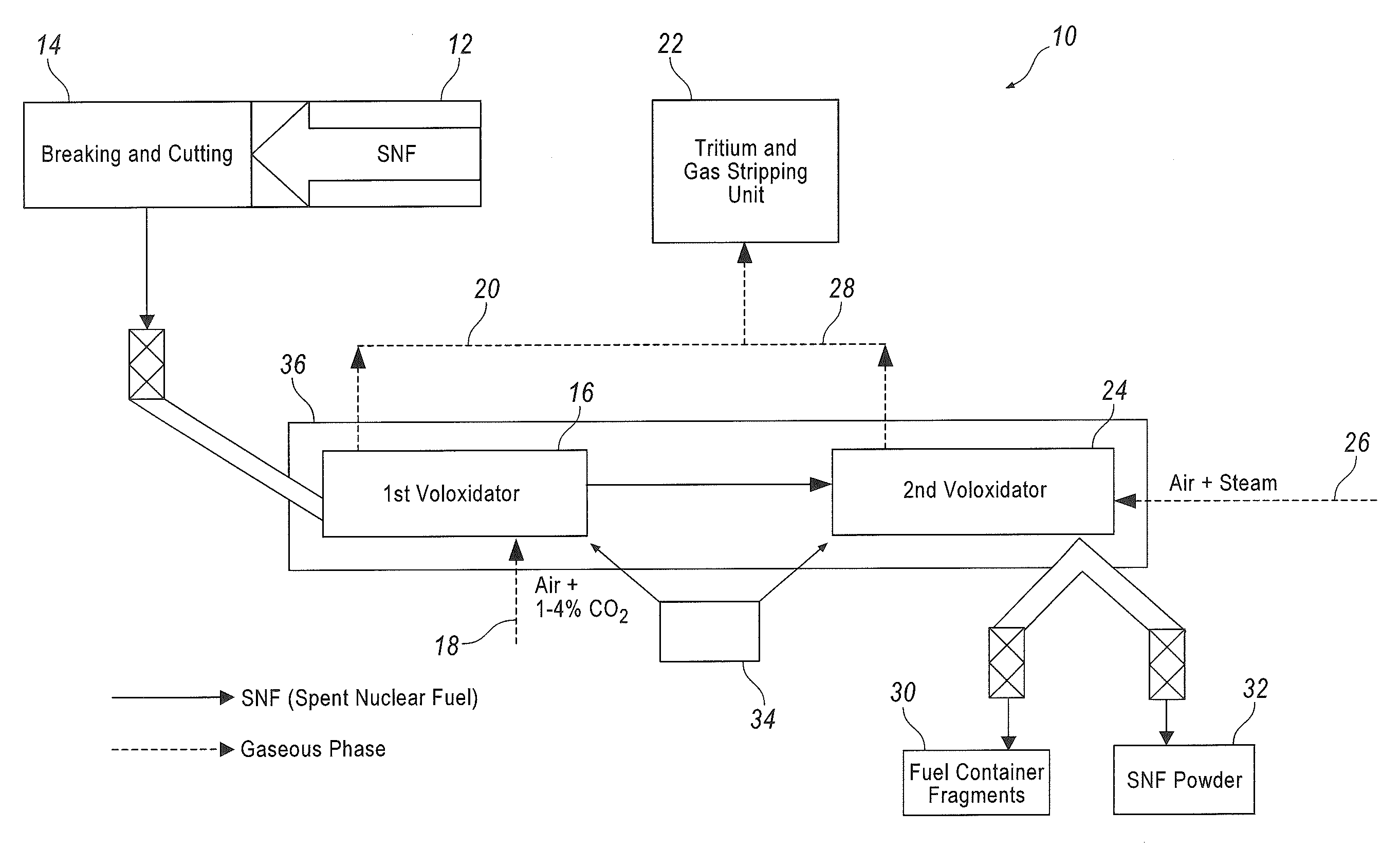Method of recycling spent nuclear fuel
a nuclear fuel and waste technology, applied in nuclear energy generation, reactor fuel elements, climate sustainability, etc., can solve the problems of increasing the volume of lrw, reducing the degree of irradiation of lrw, and reducing the extent of sublimation of cesium compounds, so as to increase the extent of tritium removal and reduce the extent of cesium compounds
- Summary
- Abstract
- Description
- Claims
- Application Information
AI Technical Summary
Benefits of technology
Problems solved by technology
Method used
Image
Examples
Embodiment Construction
[0012]According to modern refined thermodynamic calculations, tritium is present in SNF in three chemical species: T2, T2O (HTO) and CsOT. As will be shown below, this determines the essence of the method being described herein, particularly oxidative recrystallization (voloxidation) of SNF.
[0013]Referring now to the FIGURE showing an installation 10 for the realization of the method in question, SNF 12 subject to recycling arrives to a unit 14 for breaking and cutting spent fuel elements and their jackets (containers). The fragmented SNF enters a 1st reaction chamber (voloxidator) 16. Taking place in it at the first phase of SNF recycling is breaking uranium dioxide structure, oxidizing tritium to tritium water, and removing the main body of tritium including that contained in tritiated cesium hydroxide according to the reaction
2CsOT+CO2=Cs2CO3+T2O.
[0014]The shift of the reaction equilibrium to the right is achieved by the increased (of 1-4%), as compared with that in the ambient a...
PUM
| Property | Measurement | Unit |
|---|---|---|
| temperature | aaaaa | aaaaa |
| temperature | aaaaa | aaaaa |
| length | aaaaa | aaaaa |
Abstract
Description
Claims
Application Information
 Login to View More
Login to View More - R&D
- Intellectual Property
- Life Sciences
- Materials
- Tech Scout
- Unparalleled Data Quality
- Higher Quality Content
- 60% Fewer Hallucinations
Browse by: Latest US Patents, China's latest patents, Technical Efficacy Thesaurus, Application Domain, Technology Topic, Popular Technical Reports.
© 2025 PatSnap. All rights reserved.Legal|Privacy policy|Modern Slavery Act Transparency Statement|Sitemap|About US| Contact US: help@patsnap.com


